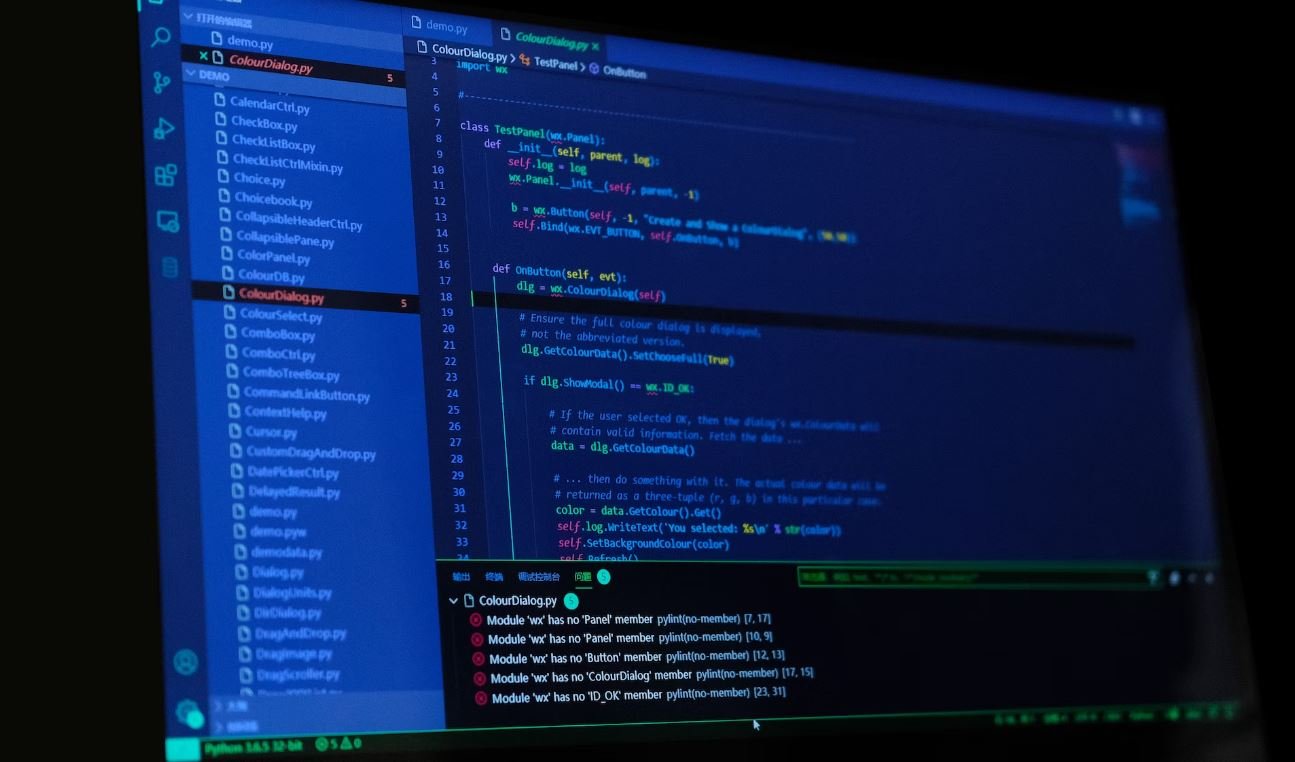Which Tesla Drives Itself
As technology continues to advance, self-driving cars are becoming more prevalent in society. Tesla, one of the leading electric vehicle manufacturers, has gained significant attention for its Autopilot feature, which allows select models to drive themselves. In this article, we will explore the various Tesla models equipped with autonomous driving capabilities and delve into the key features and differences between them.
Key Takeaways:
- Tesla offers several models with self-driving capabilities.
- Autopilot is standard on all Tesla vehicles, but full self-driving (FSD) is an optional upgrade.
- The Tesla Model 3 is the most affordable option with advanced autonomous features.
Models with Self-Driving Capabilities
Tesla currently offers several models that can drive themselves, to varying degrees. These models are:
- Tesla Model S
- Tesla Model 3
- Tesla Model X
- Tesla Model Y
While all Tesla vehicles come equipped with Autopilot as a standard feature, the level of autonomy differs depending on the model and software options chosen by the owner.
Features and Differences
Each Tesla model has unique capabilities when it comes to self-driving, as detailed in the table below:
| Tesla Model | Autonomous Features |
|---|---|
| Tesla Model S | Autopilot (standard), Full Self-Driving (FSD) |
| Tesla Model 3 | Autopilot (standard), Full Self-Driving (FSD) |
| Tesla Model X | Autopilot (standard), Full Self-Driving (FSD) |
| Tesla Model Y | Autopilot (standard), Full Self-Driving (FSD) |
*The Full Self-Driving (FSD) feature is an optional upgrade that can be purchased separately.
Among the models listed above, the Tesla Model 3 provides the most affordable option for individuals looking to experience advanced autonomous features. However, it is important to note that while Autopilot enables a degree of autonomy, it is not a completely autonomous driving system.*
Important Considerations
When considering whether to invest in self-driving capabilities for your Tesla, there are a few factors to keep in mind. These include:
- The regulatory requirements and laws regarding self-driving cars in your area.
- The limitations of current self-driving technology, which may require frequent driver intervention.
- The ever-evolving nature of autonomous driving software, with updates and improvements regularly released by Tesla.
It’s worth mentioning that while Tesla’s Autopilot is a remarkable advancement in automotive technology, it is crucial for the driver to always remain attentive and prepared to take control when necessary. Safety should always be a top priority.
Comparative Analysis
To better understand the key differences between the various Tesla models and their autonomous features, a comparison table is provided below:
| Model | Autonomous Features | Price Range |
|---|---|---|
| Tesla Model S | Autopilot (standard), Full Self-Driving (FSD) | $79,990 – $149,990 |
| Tesla Model 3 | Autopilot (standard), Full Self-Driving (FSD) | $39,990 – $56,990 |
| Tesla Model X | Autopilot (standard), Full Self-Driving (FSD) | $89,990 – $119,990 |
| Tesla Model Y | Autopilot (standard), Full Self-Driving (FSD) | $39,990 – $66,990 |
Table 1 displays the entry-level price for each model and the price range based on additional features and customization. These figures are subject to change and may vary based on the specific configuration chosen by the customer. It is recommended to check with Tesla’s official website for the latest pricing information.
Conclusion
In conclusion, Tesla offers a range of models equipped with self-driving capabilities, including the Model S, Model 3, Model X, and Model Y. While Autopilot is a standard feature on all Tesla vehicles, the option for Full Self-Driving (FSD) provides enhanced autonomous functionality but comes at an extra cost. It is important to consider regulatory requirements, limitations of current technology, and the ongoing development of Tesla’s autonomous driving software before making a purchasing decision. Drive safely and enjoy the ride!

Common Misconceptions
1. Tesla cars can fully drive themselves without human intervention.
One of the most common misconceptions about Tesla is that their cars are fully autonomous and can operate without any human intervention. However, this is not true and can lead to dangerous situations if drivers rely solely on the car’s abilities.
- Tesla cars require a human driver to be alert and ready to take control at any moment.
- Although they have advanced autonomous features, Tesla cars are not currently capable of “Level 5” autonomy, which means they cannot operate in all driving situations.
- Drivers must always stay focused on the road and be prepared to take over control if necessary.
2. Tesla cars can drive themselves in any weather condition.
Another misconception is that Tesla cars can drive themselves in any weather condition, including heavy rain, fog, or snow. While Tesla’s Autopilot features have improved over the years and can handle certain weather conditions, there are still limitations.
- Tesla Autopilot technology may struggle with poor visibility caused by heavy rain, fog, or snow.
- Extreme weather conditions can affect the car’s sensors and reduce its ability to accurately perceive the surroundings.
- It is important for drivers to be aware of the weather conditions and take control of the vehicle if necessary.
3. Tesla cars are always safer than human-driven vehicles.
While Tesla cars are known for their advanced safety features, it is not accurate to claim that they are always safer than human-driven vehicles. Safety should always be a priority, and relying solely on the car’s autonomous capabilities may lead to complacency and negligence.
- Human drivers still play a crucial role in ensuring the overall safety of the vehicle.
- There have been accidents involving Tesla vehicles while on Autopilot mode, emphasizing the importance of human supervision and intervention.
- Drivers must remain proactive and attentive while using any autonomous features to avoid potential risks.
4. Tesla cars can navigate any road or infrastructure.
Although Tesla vehicles have advanced navigation systems, it is incorrect to assume that they can seamlessly navigate any road or infrastructure. Certain road conditions, markings, or infrastructure might pose challenges for the car’s autonomous capabilities.
- Tesla cars may have difficulty recognizing and responding appropriately to certain road signs or markings.
- Uncommon or complex road configurations, such as construction zones or temporary diversions, can present challenges for the car’s autonomous systems.
- Drivers should always be prepared to provide guidance and override the autonomous features when necessary.
5. Tesla cars never require human intervention while on Autopilot.
Some people believe that once a Tesla car is on Autopilot mode, it requires no human intervention at all. However, this is not accurate, and it is crucial to understand the limitations and guidelines for using Tesla’s autonomous features.
- Tesla’s Autopilot still requires drivers to be present behind the wheel and be ready to take control at any moment.
- Drivers must keep their hands on the wheel and be prepared to react promptly to any unexpected situations that the autonomous system may not handle effectively.
- Failure to comply with Tesla’s guidelines can result in accidents and compromises overall safety.

The Growth of Tesla’s Autonomous Driving Technology
Over the past few years, Tesla has been revolutionizing the automotive industry with its cutting-edge autonomous driving technology. This article explores ten remarkable statistics and achievements that exemplify the progress made by Tesla in the field of self-driving cars.
Number of Tesla Vehicles with Self-Driving Capability
As of 2021, Tesla has equipped over 1.5 million vehicles with their self-driving hardware, enabling them to utilize autonomous features with software updates.
Autonomous Miles Driven by Tesla Vehicles
Tesla vehicles have collectively driven more than 10 billion autonomous miles, gathering valuable data and continuously improving their self-driving algorithms.
Reduction in Traffic Accidents by Tesla Autopilot
Research indicates that Tesla vehicles equipped with Autopilot have shown a 40% reduction in traffic accidents compared to traditional vehicles without such advanced driver assistance systems.
Autopilot Usage by Tesla Owners
Approximately 75% of Tesla owners actively utilize the Autopilot feature while driving on the highways, highlighting the high adoption and confidence in the autonomous capabilities.
Number of Cameras on Tesla Vehicles
Tesla cars are equipped with an impressive array of eight cameras, providing a comprehensive 360-degree view and enabling accurate object detection, even in complex driving scenarios.
Autonomous Driving Prediction Accuracy
Tesla’s autonomous driving system predicts the behavior of other vehicles with an astonishing 94% accuracy, allowing for smooth and safe interactions on the road.
Energy Efficiency of Tesla’s Self-Driving Technology
Tesla’s Autopilot system has been shown to improve energy efficiency by up to 10%, thanks to its ability to optimize acceleration, deceleration, and other driving parameters.
Autonomous Driving Patents Held by Tesla
Tesla is the holder of more than 1,500 autonomous driving patents, demonstrating their commitment to innovation and their position as a leader in self-driving technology.
Global Reach of Tesla’s Self-Driving Technology
Tesla vehicles equipped with autonomous capabilities have been deployed in over 50 countries worldwide, showcasing the widespread adoption and global impact of their self-driving technology.
Tesla’s Contribution to Autonomous Driving Research
Tesla’s vast fleet of autonomous vehicles generates an extensive amount of driving data, which is actively shared with researchers and institutions to further advance the development of self-driving technology.
In conclusion, Tesla has made remarkable strides in the realm of autonomous driving, with a growing fleet of vehicles equipped with cutting-edge self-driving hardware and continuous software updates. These achievements, ranging from the number of autonomous miles driven to reduction in traffic accidents, highlight Tesla’s commitment to revolutionizing transportation and establishing themselves as a trailblazer in the autonomous driving industry.
Frequently Asked Questions
Which Tesla Drives Itself
FAQs
-
What is Tesla Autopilot?
Tesla Autopilot is a suite of advanced driver-assistance systems designed to enhance vehicle safety and provide a semi-autonomous driving experience. It includes features such as Traffic-Aware Cruise Control, Autosteer, and Autopark. -
Can Tesla cars drive themselves?
Yes, Tesla cars equipped with Full Self-Driving (FSD) capability have the potential to drive themselves in certain situations. However, it is important to note that the technology is still being developed and requires regulatory approval in most regions. -
What is Full Self-Driving (FSD)?
Full Self-Driving (FSD) is a future software update for Tesla vehicles that aims to enable full autonomous driving under specific conditions. This includes navigating on city streets and highways, parking, and performing various driving maneuvers. -
How does Tesla Autopilot work?
Tesla Autopilot uses a combination of cameras, sensors, and artificial intelligence to detect and analyze the vehicle’s surroundings. The system can then make decisions and control the vehicle’s acceleration, braking, and steering to assist the driver. -
Can I sleep or take my hands off the wheel while using Autopilot?
No, Tesla’s Autopilot is designed as a driver-assistance system and not intended to be fully autonomous. It is important for the driver to remain attentive, keep their hands on the wheel, and be ready to take control of the vehicle at any time. -
What are the limitations of Tesla Autopilot?
Tesla Autopilot has certain limitations. It may not detect all objects, work effectively in all weather conditions, or handle complex driving scenarios. It is always necessary to pay attention to the road and be prepared to take control of the vehicle when required. -
Is Tesla Autopilot legal?
Yes, Tesla Autopilot is generally legal to use on public roads in the jurisdictions where it is available. However, specific regulations and requirements may vary by region, and it is important to follow local laws and guidelines when using the system. -
Are Tesla vehicles with Autopilot safer than regular cars?
Tesla vehicles with Autopilot have been found to have lower crash rates compared to the average vehicle. However, it is important to note that Autopilot is not infallible and drivers should still exercise caution and responsible driving practices. -
How frequently does Tesla release software updates for Autopilot?
Tesla releases software updates for Autopilot on a regular basis to improve and add new features. The frequency of these updates can vary, but Tesla owners often receive over-the-air updates that enhance their vehicle’s capabilities. -
Can I retrofit Autopilot on an older Tesla model?
Tesla Autopilot can be retrofitted on certain older Tesla models, but the availability and compatibility may vary depending on the vehicle’s hardware and software capabilities. It is recommended to contact Tesla directly for more information.




